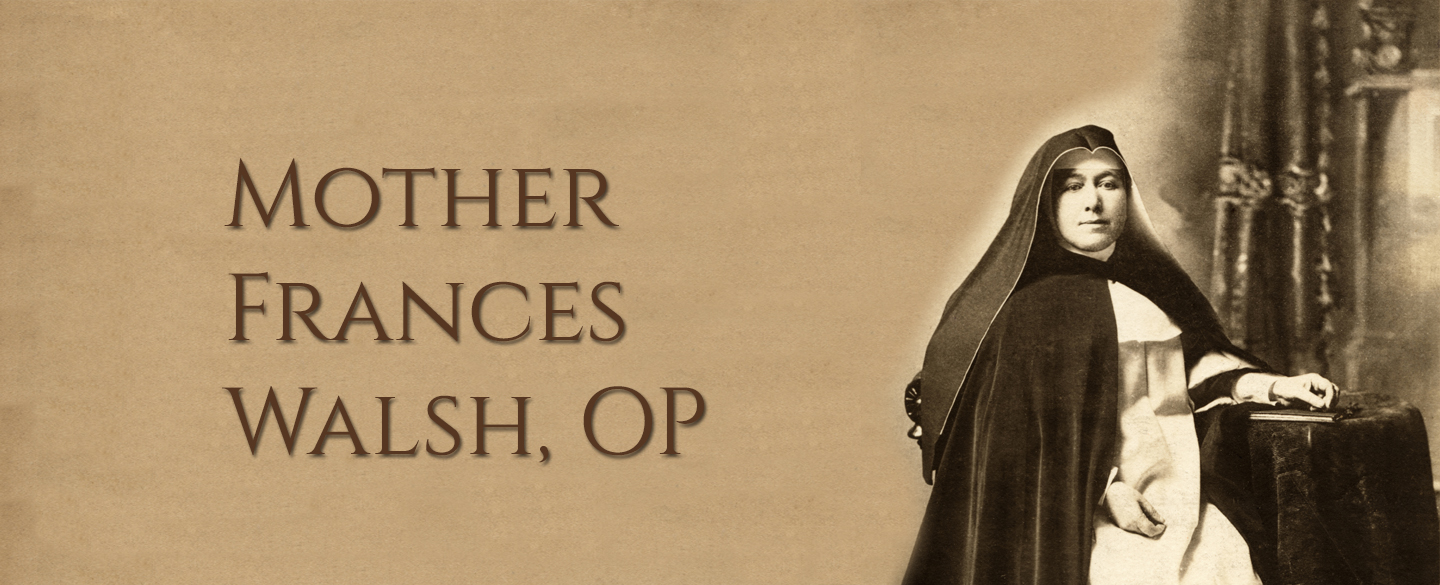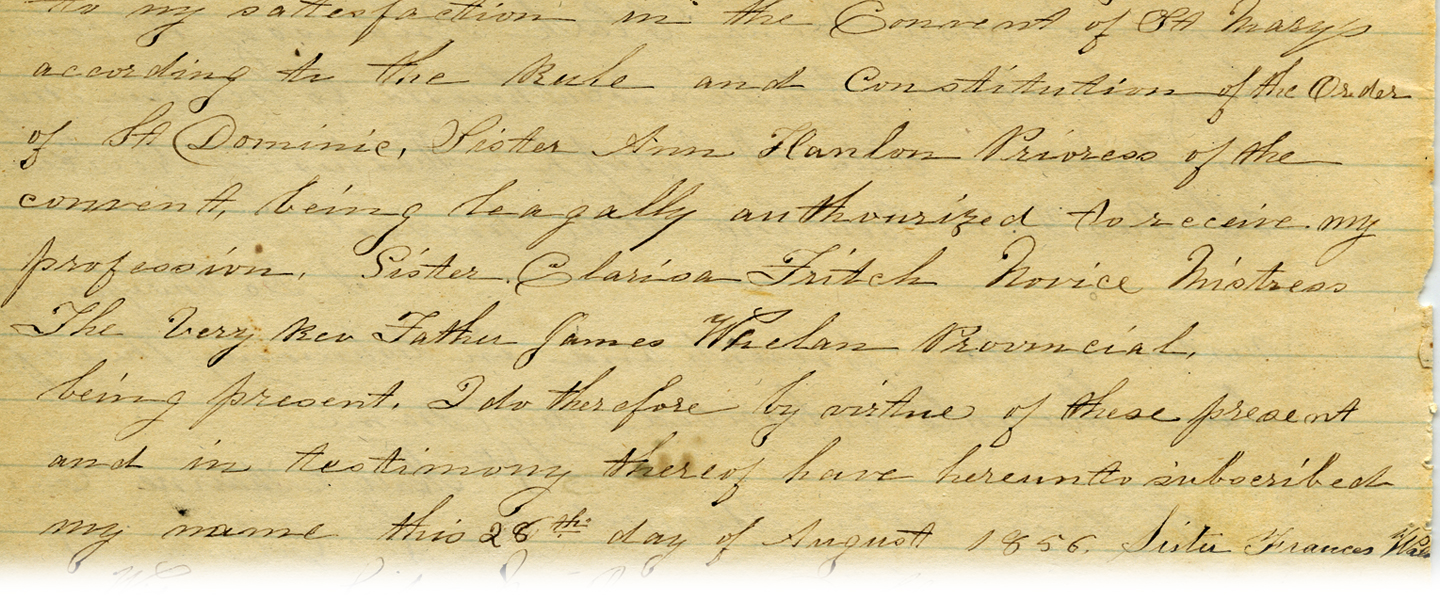
With hearts overflowing with gratitude the sisters gave thanks to God their Savior who was kindly leading them through the wilderness safely towards the Land of Promise… the sisters cherished equally the remembrance of the past—its pains and pleasures. They made those the subjects of their consideration and meditation… Meanwhile St. Cecilia Community was growing. Four desirable candidates entered the novitiate, all of whom were enthusiastically determined to walk henceforth on the narrow, perfect way. (Mother Frances Walsh, Annals of St. Cecilia Congregation, 1860-1881)
Prioress General: 1863-1864; 1898-1904; 1910-1913
How true it is that God sees not as man sees and often chooses the young and lowly to lead (cf. 1 Samuel 16:7). This was certainly the case with Sister Frances Walsh. This native of Ireland had hardly been professed for two years when, in 1860, she joined three older sisters from St. Mary’s in Somerset, Ohio to make the new foundation in Nashville, Tennessee. After leading the young community from 1863-1864, she continued to teach at St. Cecilia Academy until Mother Ann Hanlon sent her to Memphis in 1868 for a summer of rest. She was called back after a brief respite to assist Mother Ann in making a momentous decision: whether to stay in Nashville or return to Ohio in the face of mounting debt and uncertain future for the Academy. The two determined that they place their trust in the guidance of St. Dominic and set aside thirty days of praying the fifteen mysteries of the Rosary before concluding their decision. Before the end of the thirty days, it became clear that the sisters should ask to remain and do everything in their power to pay off the debt.
In addition to her deep commitment to the religious life and the well-being of the new community, Sister Frances volunteered, with four other sisters, to nurse the victims of Nashville’s cholera epidemic of 1872. In 1873 and 1878 she would travel to Memphis to assist those stricken by yellow fever.
Sister Frances served the community four times as its major superior and numerous other times she served as secretary or treasurer. Perhaps her most enduring contribution has been the annals she kept of the early years, at one point drafting them on the backs of student exams. Fittingly, she led the community during its fiftieth anniversary year. And, until the most recent building project, she had been the last major superior to oversee an addition to the Motherhouse.
Mother Frances truly modeled a commitment to poverty, chastity, and obedience, as well as an enduring reliance on the Providence of God and on the fatherly concern of St. Dominic for his daughters. As one sister wrote of Mother Frances in 1935, she was “a most deeply spiritual woman possessing superior qualities of mind and heart, broad vision, untiring energy, and an indomitable will.” Without her guidance and commitment and that of Mother Ann Hanlon, St. Cecilia would have ceased to exist less than a decade after its founding.


 Back
Back